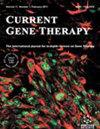聚(rC)结合蛋白1通过5’UTR抑制STAT3的翻译。
IF 3.8
4区 医学
Q2 GENETICS & HEREDITY
引用次数: 4
摘要
背景信号转导和转录激活子3(STAT3)是一种致癌基因,在癌症中经常过表达。然而,STAT3表达的调控机制尚不完全清楚。聚(rC)结合蛋白1(PCBP1)是一种调节mRNA稳定性、剪接和翻译的RNA结合蛋白。PCBP1是一种肿瘤抑制因子,可抑制多种致癌基因的翻译。目的我们旨在了解STAT3表达的调控机制。方法将人STAT3基因的5’UTR或3’UTR区分别插入绿色荧光基因(GFP)的上游或下游,作为报告系统分析PCBP1对STAT3基因表达的抑制作用。利用5’UTR的缺失和点突变来寻找翻译抑制的基本调控序列。在cBioPortal在线服务中分析了PCBP1蛋白的突变。分析了突变PCBP1蛋白对口腔鳞状细胞癌(OSCC)细胞系STAT3表达、癌症细胞增殖和集落形成的影响。结果SPCBP1通过STAT3的5’UTR基序抑制mRNA翻译。此外,我们发现PCBP1蛋白的两个亮氨酸残基(Leu100和Leu102)在癌症中经常发生突变。这些突变消除了PCBP1对STAT3翻译的抑制功能。令人惊讶的是,与野生型PCBP1蛋白相比,这些突变可以促进癌症细胞的生长和集落形成。结论总之,我们证明PCBP1可以通过其5’UTR抑制STAT3的表达,并且PCBP1蛋白的两个亮氨酸残基对其功能是必需的。。本文章由计算机程序翻译,如有差异,请以英文原文为准。
Poly(rC) binding protein 1 represses the translation of STAT3 through 5' UTR.
BACKGROUND
Signal transducer and activator of transcription 3 (STAT3) is an oncogene and frequently overexpressed in cancers. However, the regulatory mechanisms of STAT3 expression are not fully understood. Poly(rC)-binding protein1 (PCBP1) is an RNA-binding protein that regulates mRNA stability, splicing, and translation. PCBP1 is a tumor suppressor and can inhibit the translation of several oncogenic genes.
OBJECTIVE
We aimed to understand the regulatory mechanisms of STAT3 expression.
METHODS
The 5' UTR or 3' UTR regions of the human STAT3 gene were inserted to the upstream or downstream of the green fluorescent gene (GFP), respectively, which were used as reporter systems to analyze the inhibitory effects of PCBP1 on STAT3 gene expression. The deletion and point mutation in 5' UTR were used to search the essential regulatory sequences of the translation inhibition. The mutations of PCBP1 protein were analyzed in the cBioPortal online service. The effects of mutated PCBP1 proteins on STAT3 expression, cancer cell proliferation and colony formation were analyzed in oral squamous cell carcinoma (OSCC) cell lines.
RESULTS
PCBP1 inhibits mRNA translation through a motif in the 5' UTR of STAT3. Moreover, we found that two leucine residues (Leu100 and Leu102) of PCBP1 protein are frequently mutated in cancers. These mutations abolished the inhibition function of PCBP1 on STAT3 translation. Surprisingly, in contrast to wild-type PCBP1 protein, these mutations can promote the growth and colony formation of cancer cells.
CONCLUSION
Overall, we demonstrate that PCBP1 can inhibit the expression of STAT3 through its 5' UTR, and two leucine residues of PCBP1 protein are essential for its functions..
求助全文
通过发布文献求助,成功后即可免费获取论文全文。
去求助
来源期刊

Current gene therapy
医学-遗传学
CiteScore
6.70
自引率
2.80%
发文量
46
期刊介绍:
Current Gene Therapy is a bi-monthly peer-reviewed journal aimed at academic and industrial scientists with an interest in major topics concerning basic research and clinical applications of gene and cell therapy of diseases. Cell therapy manuscripts can also include application in diseases when cells have been genetically modified. Current Gene Therapy publishes full-length/mini reviews and original research on the latest developments in gene transfer and gene expression analysis, vector development, cellular genetic engineering, animal models and human clinical applications of gene and cell therapy for the treatment of diseases.
Current Gene Therapy publishes reviews and original research containing experimental data on gene and cell therapy. The journal also includes manuscripts on technological advances, ethical and regulatory considerations of gene and cell therapy. Reviews should provide the reader with a comprehensive assessment of any area of experimental biology applied to molecular medicine that is not only of significance within a particular field of gene therapy and cell therapy but also of interest to investigators in other fields. Authors are encouraged to provide their own assessment and vision for future advances. Reviews are also welcome on late breaking discoveries on which substantial literature has not yet been amassed. Such reviews provide a forum for sharply focused topics of recent experimental investigations in gene therapy primarily to make these results accessible to both clinical and basic researchers. Manuscripts containing experimental data should be original data, not previously published.
 求助内容:
求助内容: 应助结果提醒方式:
应助结果提醒方式:


